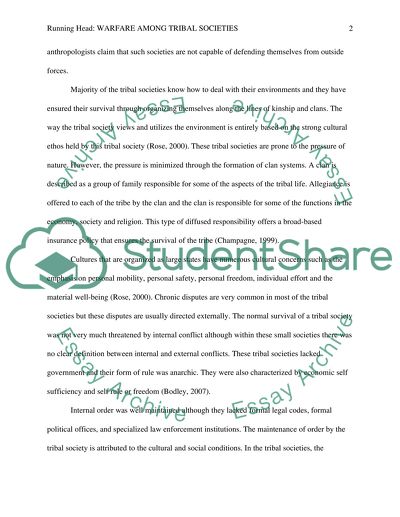Cite this document
(“Warfare among tribal societies other topics surrounding warfare, Research Paper”, n.d.)
Retrieved from https://studentshare.org/family-consumer-science/1412102-warfare-among-tribal-societies-other-topics-surrounding-warfare-conflict-or-aggression
Retrieved from https://studentshare.org/family-consumer-science/1412102-warfare-among-tribal-societies-other-topics-surrounding-warfare-conflict-or-aggression
(Warfare Among Tribal Societies Other Topics Surrounding Warfare, Research Paper)
https://studentshare.org/family-consumer-science/1412102-warfare-among-tribal-societies-other-topics-surrounding-warfare-conflict-or-aggression.
https://studentshare.org/family-consumer-science/1412102-warfare-among-tribal-societies-other-topics-surrounding-warfare-conflict-or-aggression.
“Warfare Among Tribal Societies Other Topics Surrounding Warfare, Research Paper”, n.d. https://studentshare.org/family-consumer-science/1412102-warfare-among-tribal-societies-other-topics-surrounding-warfare-conflict-or-aggression.


